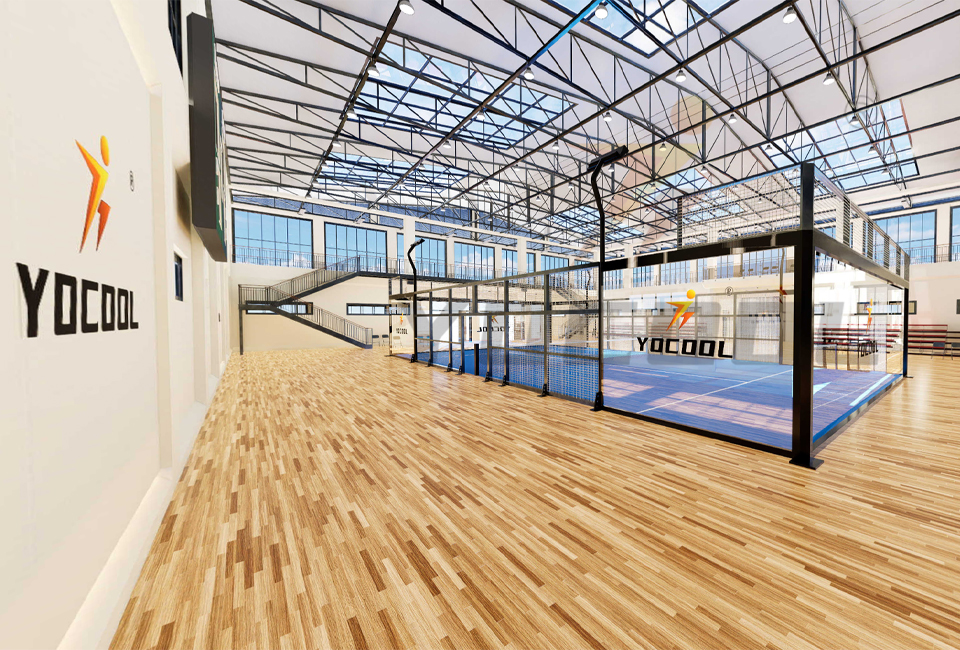

The Rise of Padel Tennis A Fusion of Tennis and Squash
In recent years, the world of racket sports has witnessed a surge in the popularity of padel tennis, a dynamic game that blends elements of tennis and squash. Originating in Mexico in the 1960s, padel offers a unique playing experience that appeals to players of all ages and skill levels, contributing to its rapid global expansion. This article will explore the characteristics and benefits of padel tennis, compare it with traditional tennis and squash, and examine its growing international presence.
What is Padel Tennis?
Padel tennis is played on a smaller, enclosed court that is approximately one-third the size of a traditional tennis court. The court dimensions are 20 meters long by 10 meters wide, surrounded by walls that can be utilized in play, much like squash. The game is usually played in doubles, with two players on each team. Players use solid paddles—without strings—to hit a medium-sized, low-compression ball over a net that stands at a height of 88 centimeters.
One of the most appealing aspects of padel is the scoring system, which is identical to that of tennis. Games consist of sets, typically played to six games, with a tiebreaker played if the score reaches 5-5. However, the small court and the walls allow players to employ various strategies that differ significantly from the traditional game of tennis.
The Benefits of Playing Padel
One of the biggest draws of padel is its accessibility. Because it is generally played in doubles and involves shorter rallies than traditional tennis, players can engage with the game at a comfortable pace. This makes padel an excellent choice for beginners, as well as older adults who may find the physical demands of tennis too challenging. The impact on joints is reduced because players are less likely to encounter the long, rigorous rallies common in traditional tennis matches.
Additionally, padel encourages social interaction. The doubles format promotes camaraderie among players, making it a popular choice for social events and recreational play. Many clubs now offer padel alongside more traditional racket sports, appealing to diverse groups of players looking to enjoy an active lifestyle.
Moreover, padel provides excellent cardiovascular exercise, helping players improve their agility, coordination, and overall fitness. The strategic gameplay often requires quick thinking and adaptability, enhancing mental acuity alongside physical fitness.

Comparing Padel, Tennis, and Squash
While padel has its roots in tennis and shares the collaborative spirit of squash, each sport presents a unique set of challenges. Tennis courts allow for more powerful serves and larger playing areas, leading to longer rallies. In contrast, squash courts feature significant bounce-off walls and tighter boundaries, often resulting in fast-paced exchanges. Padel occupies a middle ground, offering the excitement of wall play while maintaining the internationally recognized scoring and doubles format of tennis.
One key difference is the equipment involved. Padel paddles are solid with no strings, which not only makes the game more accessible for beginners but also leads to different striking techniques compared to tennis or squash racquets. The ball used in padel is slightly softer than a standard tennis ball, which can affect play style and pacing.
Global Expansion of Padel Tennis
In recent years, padel has exploded in popularity across Europe, particularly in Spain and Italy, where it has gained a massive following. It has even made its way to North America, with numerous clubs and facilities dedicated to the sport popping up in major cities. Professional padel competitions are being organized, drawing significant media attention and sponsorship, fueling its growth.
This trend has also sparked interest among professional tennis players, many of whom are beginning to embrace padel as a complementary sport. The cross-pollination of skills from tennis, squash, and padel is paving the way for a new generation of well-rounded athletes.
Conclusion
Padel tennis is a vibrant and engaging sport that combines elements of tennis and squash while creating a unique playing experience. Its accessibility, social nature, and fitness benefits contribute to its rising popularity worldwide. As more players discover the joys of this sport, it is likely to continue its trajectory of growth and become a staple in the realm of racket sports. Whether you’re a seasoned athlete or a newcomer looking to pick up a racket, padel tennis may just be the perfect game for you.
High-Performance Industrial Flooring Solutions China Paddle Tennis Court for Sale
High-Performance Industrial Flooring Solutions Durable & Cost-Effective
Homogeneous Transparent Floor – Durable & Stylish Rubber Floor Solutions
Premium Homogeneous Transparent Floor for Durable & Stylish Spaces Rubber Floor Solutions
Premium Sports Floor Solutions Durable PVC Sports Floor & Rubber Floor for Gyms
Durable Rubber Composite Floor Premium Rubber Floor & Mats Solutions